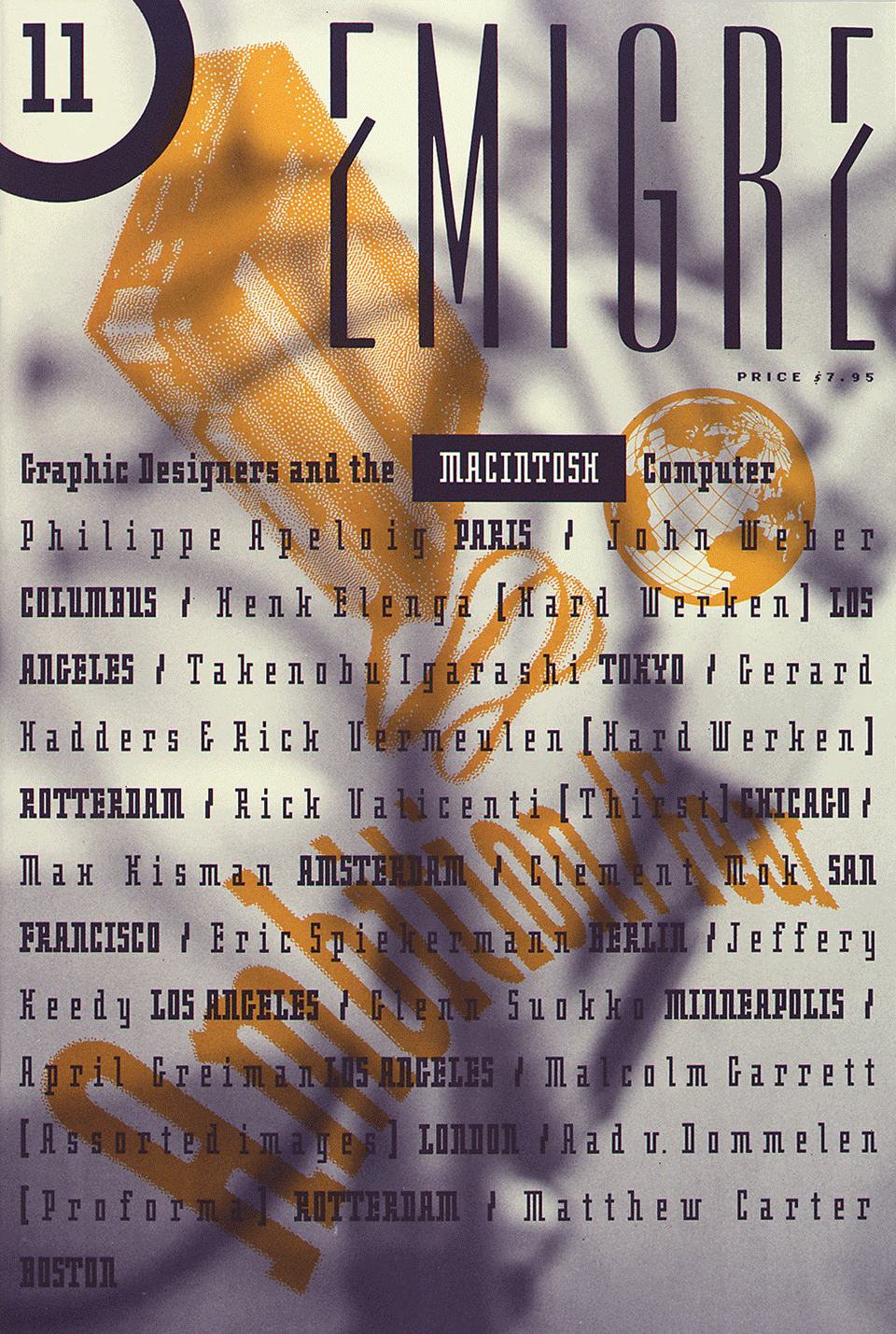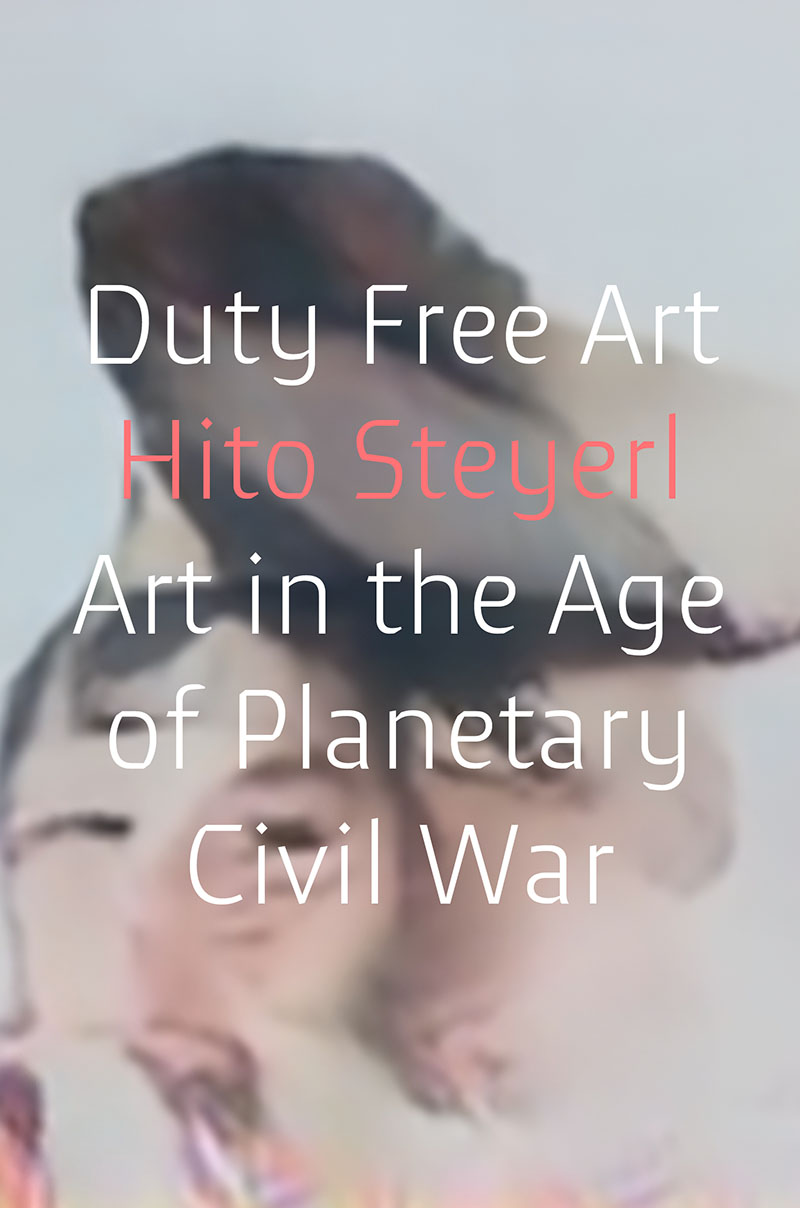Emigre, 11: Graphic Designers and the Macintosh Computer (1989)
Filed under magazine | Tags: · computer graphics, graphic design, typography

“Emigre magazine’s eleventh issue, ‘Ambition/Fear: Graphic Designers and the Macintosh Computer’, contains vivid artifacts of a discipline’s first encounter with digital tools. From the aesthetics of bitmaps to the expressive interventions made possible by new access to typesetting controls, not to mention the self-publishing venture of the magazine itself, this issue combines modernist and postmodern agendas in a model construction of text-based community.”
Release of the digitized issue “coincides with the publication of “Inflection Point” a rigorously researched essay about Emigre #11 by writer/designer Emily McVarish. The essay takes a close look at Emigre #11, analyzing the technical, critical, and cultural production that would shape Emigre as a medium for typographic demonstration and discussion among peers.”
Design and production: Rudy VanderLans
Typeface designs: Zuzana Licko
Publisher Emigre Graphics, Berkeley, CA, 1989
32 pages, 11.25 x 16.75 in
via Letterform Archive
Commentary: Emily McVarnish (2017, 59 pp).
Comment (0)Hito Steyerl: Duty Free Art: Art in the Age of Planetary Civil War (2017)
Filed under book | Tags: · art, contemporary art, politics, visual culture

“What is the function of art in the era of digital globalization?
How can one think of art institutions in an age defined by planetary civil war, growing inequality, and proprietary digital technology? The boundaries of such institutions have grown fuzzy. They extend from a region where the audience is pumped for tweets to a future of “neurocurating,” in which paintings surveil their audience via facial recognition and eye tracking to assess their popularity and to scan for suspicious activity.
In Duty Free Art, filmmaker and writer Hito Steyerl wonders how we can appreciate, or even make art, in the present age.
What can we do when arms manufacturers sponsor museums, and some of the world’s most valuable artworks are used as currency in a global futures market detached from productive work? Can we distinguish between information, fake news, and the digital white noise that bombards our everyday lives? Exploring subjects as diverse as video games, WikiLeaks files, the proliferation of freeports, and political actions, she exposes the paradoxes within globalization, political economies, visual culture, and the status of art production.”
Publisher Verso, London, 2017
Creative Commons BY-NC 4.0 License
ISBN 9781786632432, 1786632438
244 pages
Reviews: J.J. Charlesworth (ArtReview, 2017), Fisun Güner (Elephant, 2017), El Putnam (Visual Resources, 2018), Carol Breen (Media Theory Journal, 2018).
Exh. review: Gabi Scardi (Domus, 2016).
HTML (added on 2019-12-13)
EPUB
Pauline Oliveros: Sonic Meditations (1974)
Filed under artist publishing, musical score | Tags: · listening, sound

“25 meditations for musicians of all ages and skill levels, to help them learn how to focus on, listen to, and produce sound naturally. An important work in the development of Oliveros’ Deep Listening.”
Publisher Smith Publications, Baltimore, MD, [1974]
[33] pages
Commentary: Pauline Oliveros (Painted Bride Quarterly, 1976), William Osborne (2000), Kerry O’Brien (New Yorker, 2016), Bradford Bailey (The Hum, 2016), Emma Warren (Bowers & Wilkins, 2017).
See also Oliveros in UbuWeb Sound and UbuWeb Film
Comment (0)
